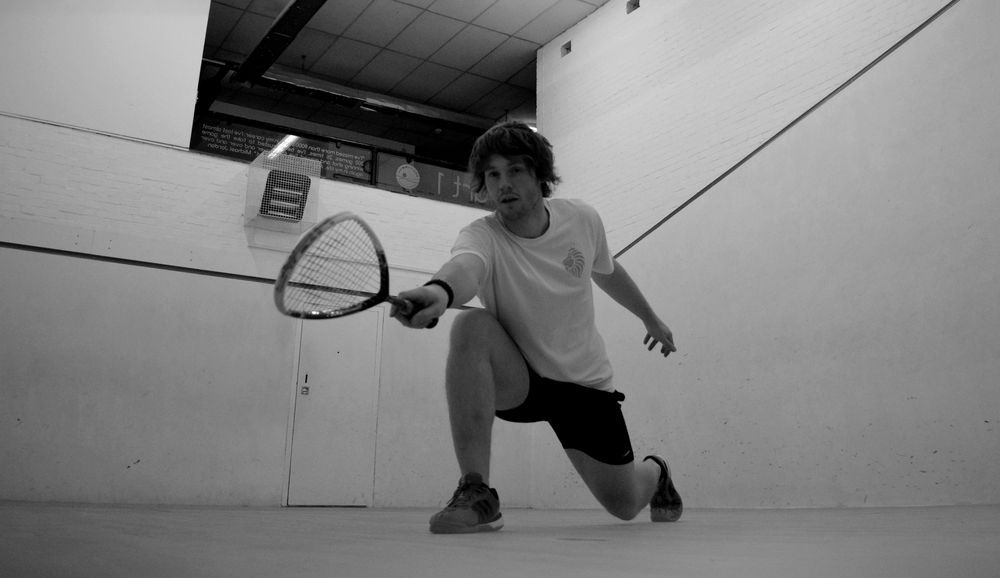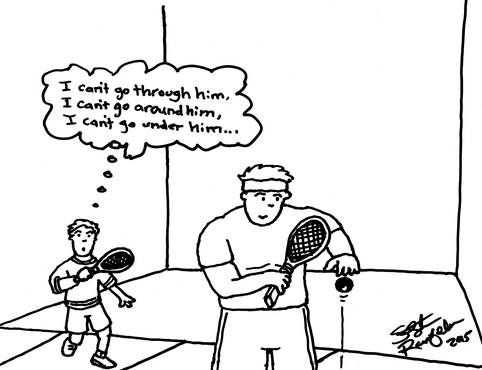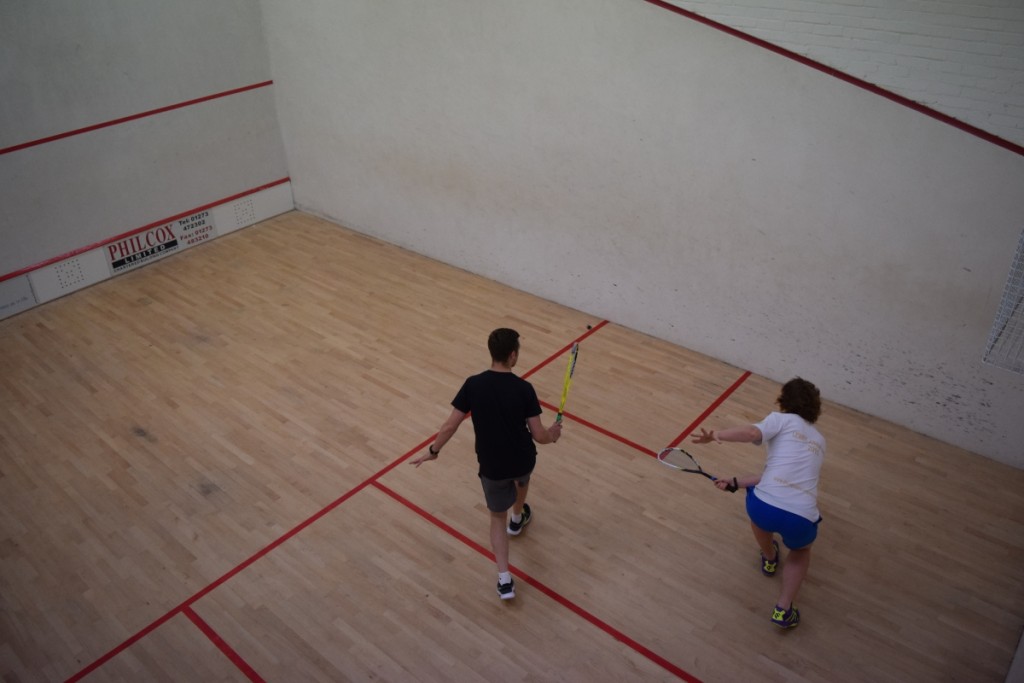Making use of all available space.
Traditionally, most people think of there being four corners on the court into which we attempt to play the majority of our shots; the two front corners and the two back corners. This can be a very efficient tactic and can even be very exciting when the drops and drop volleys are played to a high level. However, some opponents are fantastic when moving in a straight line but not so good when forced into other areas of the court or when there are lots of cross-court shots. You need to be able to think outside of just these four corners in order to be a well rounded player.
This is a concept Nick Matthew touches upon in his book ‘Sweating Blood’ and it is something which is really important to bear in mind when you are building the rally.
In the anecdote, the idea is presented to Nick Matthew of hitting the ball into ‘eight corners’. Are there eight? Are there more than eight? So where are these eight ‘corners’? These eight are not all ‘corners’ in the traditional sense. There are of course four areas into which you can play effective winners – the four corners we’ve previously mentioned.
In addition to these four traditional corners, when trying to achieve good length, we could play more lob shots, as well as hammering the ball at a low height on the front wall. We could even aim for a middling height at a medium pace. We should also throw in more extremely low shots, such as kill or stun shots. It’s better to have a few different shots that achieve the same goal, such as hitting to length, as this keeps our opponent on the back foot. These varying shots will all hit slightly different areas of the court – the kills and stuns will bounce shorter than a traditional length shot but further back than a drop – which will keep our opponent moving under more pressure as they struggle to keep up with the range of shots played.
Using slightly different shots to force opponents into different areas of the court used will force them away from smooth movement to and from the main four corners, which will almost leave them slightly disorientated.”
You could also play such a wide range of boasts to make better use of the middle areas of the court. The boast could be traditional and hit three walls, coming back off the side wall, or it could be so narrow that it hits the front wall very close to the corner. As I discussed in the post ‘Two-wall or three wall boasts?’, it may also hit the front wall in the middle and therefore bounce twice before the side wall, putting the opponent under pressure.
You can also take a few liberties and play a few shots down the middle in classic Geoff Hunt style! Be careful when you do this though, you’ll need to really sell the deception to avoid giving away strokes.
There are probably several more areas that you can think of and you should try to use as many of them as possible. The court is a rather big place and the walls have humungous surface areas. Ask yourself if you’re really making use of all of the space that is available to you.


